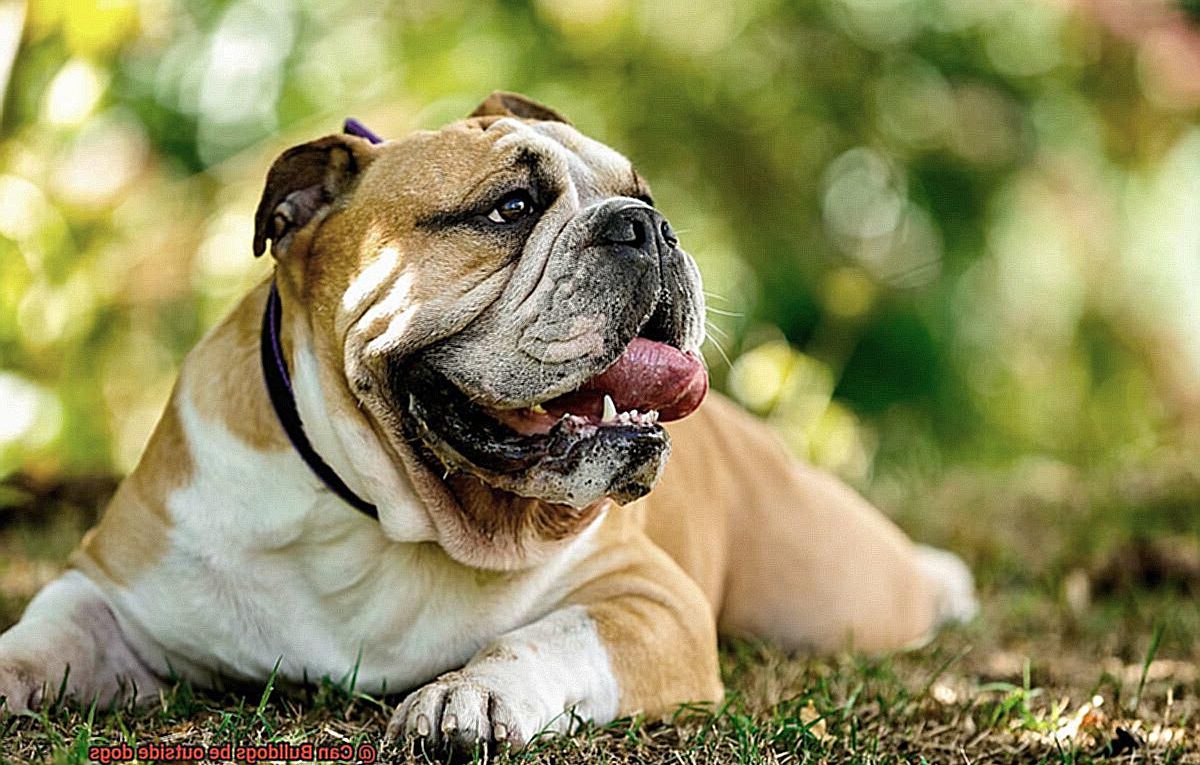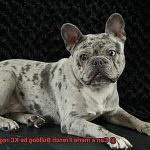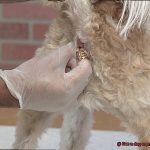Can Bulldogs be outside dogs?
Are you pondering whether your Bulldog is cut out for the great outdoors?
It’s a question that has sparked countless debates among dog owners. Bulldogs, with their irresistible wrinkled mugs and loving personalities, certainly have their charms.
But can they handle the rugged life of an outside dog? In this blog post, we’ll delve into the factors that determine whether Bulldogs can flourish in an al fresco environment.
So, let’s embark on this journey together to discover if your Bulldog is destined for outdoor adventures or better suited to snuggling up inside.
The Physical Characteristics of Bulldogs That Make Them Poor Outdoor Dogs
Contents
- 1 The Physical Characteristics of Bulldogs That Make Them Poor Outdoor Dogs
- 2 Health Concerns for Bulldogs in Extreme Weather Conditions
- 3 Bulldog Respiratory Issues and Outdoor Pollution
- 4 Bulldogs and Skin Allergies in the Outdoors
- 5 Keeping Bulldogs Indoors: Temperature Control and Ventilation
- 6 Pros and Cons of Taking Your Bulldog Outside
- 7 Tips for Keeping Your Bulldog Safe in the Outdoors
- 8 What to Do if Your Bulldog Overheats or Gets Too Cold Outside
- 9 Conclusion
Today, we’re going to talk about the physical characteristics of our beloved bulldogs that make them less suitable as outdoor dogs. While these adorable pooches have their own unique charm, they may face certain challenges when it comes to outdoor living. So let’s dive into the details.
Brachycephalic Skull Structure:
Bulldogs have short noses and flat faces, which can lead to respiratory issues. Their shortened airways make it difficult for them to regulate their body temperature effectively, especially in hot and humid climates. Heatstroke can become a serious concern, as bulldogs struggle to cool themselves down through panting.
Excessive Skin Folds and Wrinkles:
Those cute wrinkles may be adorable, but they can cause problems when it comes to outdoor living. The folds create a perfect environment for bacteria and yeast to thrive, leading to skin infections and irritations. Regular cleaning and maintenance of these folds are necessary to keep our furry friends happy and healthy.
Stocky Build:
Bulldogs have a compact and muscular body with short legs, making them poor swimmers. If they encounter bodies of water while outside, it’s essential to keep a close eye on them. Additionally, their stocky build makes them more susceptible to joint problems such as hip dysplasia and arthritis, which can be worsened by strenuous outdoor activities.
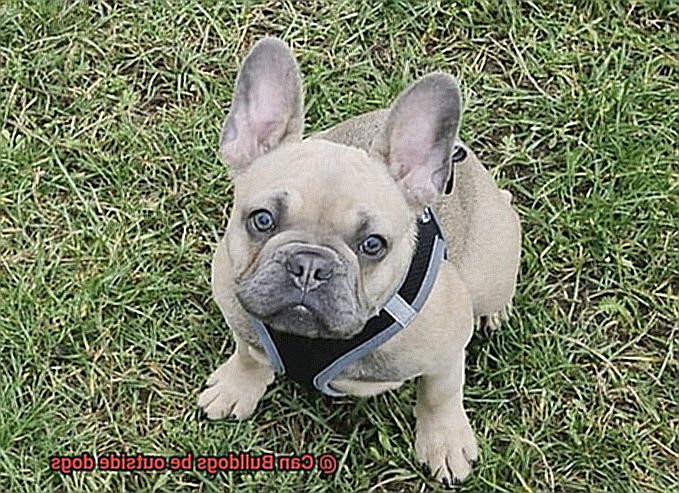
Sensitivity to Allergens:
Our furry friends may have sensitive skin that reacts negatively to various environmental allergens like pollen, grass, or dust mites. These allergies can cause itching, redness, and discomfort, making outdoor environments particularly challenging for them.

Short Coat:
Bulldogs have a short coat that may not provide adequate protection against extreme weather conditions. In cold climates, they can suffer from hypothermia due to their limited ability to retain body heat. Conversely, their thin coat makes them vulnerable to sunburn and heat exhaustion in hot and sunny environments.
Health Concerns for Bulldogs in Extreme Weather Conditions
We all know how much you adore your furry friends, and it’s essential to keep them safe and healthy in all weather conditions. French Bulldogs, with their irresistible charm and squishy faces, are no exception. As an expert in bulldog health concerns, let me share some valuable insights on how extreme weather can affect our beloved Frenchies and what we can do to protect them.
Hot Weather Woes: The Struggle is Real
French Bulldogs, like their bulldog cousins, are brachycephalic cuties. This means they have those adorable flat faces and shortened airways that make them more susceptible to heat exhaustion and heatstroke. In extreme heat, our Frenchies struggle to pant effectively, which can lead to dangerous overheating. So, what can we do?
- Provide a Cool Retreat: Create a cool and shaded environment for your Frenchie indoors. If you’re spending time outside, make sure there’s ample shade available.
- Fresh Water at All Times: Hydration is key. Keep a fresh bowl of water within reach for your Frenchie to prevent dehydration.
- Watch for Warning Signs: Keep an eye out for excessive panting, drooling, difficulty breathing, weakness, disorientation, or collapse. If any of these signs appear, seek immediate veterinary attention.
Cold Weather Chills: Bundle Up Your Frenchie
While French Bulldogs may be little bundles of joy, they’re not well-equipped to handle freezing temperatures. With their short coat and lack of insulation, they can quickly become chilled and even suffer from hypothermia if left outside for too long.
- Warm Shelter is a Must: Provide your Frenchie with a cozy doghouse or bring them inside during severe weather conditions.
- Snug as a Bug: Give them warm bedding and even consider some stylish doggie clothing to keep them comfortable in chilly temperatures.
Skin Sensitivities: Beware of Irritations
Extreme weather conditions can exacerbate skin allergies and irritations in French Bulldogs. These can cause discomfort and distress to our furry friends. But fret not, you can take steps to prevent these issues.
- Regular Grooming: Keep those wrinkles clean and dry with regular grooming sessions. Pay extra attention to the folds around their face, tail, and paws.
- Hygiene is Key: Practice good hygiene by keeping your Frenchie’s skin dry, especially after walks in wet or snowy conditions.
Respiratory Risks: Take a Breath
French Bulldogs already have compromised airways, which can be worsened by extreme weather conditions. High humidity or extreme cold can lead to breathing difficulties and respiratory distress.
Monitor Breathing Patterns: Pay close attention to your Frenchie’s breathing and seek veterinary care if you notice any abnormalities.
Bulldog Respiratory Issues and Outdoor Pollution
We all know that Bulldogs are bundles of love and joy, but they also come with some unique challenges, especially when it comes to their respiratory health. Bulldogs are prone to respiratory issues due to their short and brachycephalic face. And as if that wasn’t enough, outdoor pollution can make things even harder for them. But don’t worry, we’re here to help you navigate this topic and keep your furry friend healthy and happy.
Why does outdoor pollution affect Bulldogs more?
Bulldogs already have a tough time breathing due to their narrow nostrils and elongated soft palate. When they’re exposed to outdoor pollutants like smog or car exhaust fumes, it can irritate their already sensitive airways and make it even more difficult for them to catch their breath.
And let’s not forget about allergies. Bulldogs are prone to allergies, and outdoor pollutants like pollen or dust can trigger their symptoms and make it uncomfortable for them to be outside.
What can you do to protect your Frenchie?
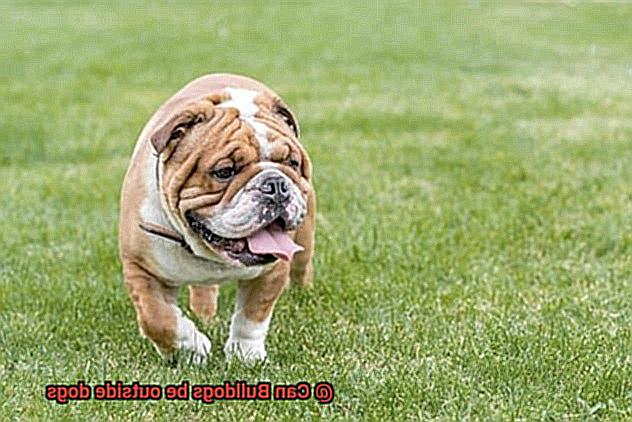
- Stay informed about air quality: Keep an eye on air quality reports in your area. Avoid taking your Bulldog for walks during times when pollution levels are high.
- Choose less polluted areas: Opt for walking routes with less traffic and pollution. Parks or quieter streets can be a better choice for your Frenchie’s respiratory health.
- Clean indoor environment: Make sure your home is clean and well-ventilated. Regularly dust, vacuum, and keep allergens at bay to improve your Bulldog’s indoor air quality.
- Regular vet check-ups: To stay on top of your Bulldog’s respiratory health, regular veterinary check-ups are essential. Your vet may recommend medications or treatments to manage their symptoms and improve their quality of life.
Remember, every Bulldog is unique.
It’s important to note that not all Bulldogs will have the same level of respiratory issues. Some may be more tolerant of outdoor pollution than others. However, it’s always better to err on the side of caution and prioritize your Frenchie’s well-being by minimizing their exposure to outdoor pollutants as much as possible.
Bulldogs and Skin Allergies in the Outdoors
Bulldogs – those adorable wrinkly faces and squishy bodies that steal our hearts. But did you know that Bulldogs are prone to skin allergies? Yep, it’s true. Those short, wrinkled skins may be cute, but they’re also more susceptible to irritation and allergic reactions compared to other dog breeds. So if you’re a proud Bulldog owner looking to enjoy the great outdoors with your four-legged friend, it’s essential to take some precautions to minimize the risk of skin allergies.
Creating an Allergen-Free Outdoor Environment
One of the first steps you can take is to provide a clean and allergen-free outdoor environment for your Bulldog. Regularly mow the lawn to keep it short and remove weeds and plants that may trigger allergies. Keeping the area free from dust and pollen will go a long way in reducing the chances of your Bulldog developing skin allergies.
Grooming and Hygiene
Proper grooming and hygiene are crucial for Bulldogs with sensitive skin. Regular bathing using hypoallergenic shampoos can help soothe the skin and prevent allergies. Make sure to dry your Bulldog thoroughly after each bath to avoid moisture accumulating in their wrinkles, which can lead to bacterial or yeast infections.
Protection from Extreme Weather Conditions
Just like us, Bulldogs need protection from extreme weather conditions. Exposure to excessive heat or cold can worsen existing skin allergies or even lead to new ones. Provide shade and shelter for your Bulldog when they’re outside, especially during hot summer days or chilly winter nights.
Consulting with a Veterinarian
If your Bulldog has a history of skin allergies or if you’re considering making them an outdoor dog, it’s always a good idea to consult with a veterinarian. They can provide specific recommendations and treatments tailored to your dog’s needs. Your vet may suggest allergy testing or prescribe medications to alleviate your Bulldog’s discomfort and prevent skin allergies.
Indoor Alternatives
In some cases, Bulldogs with severe skin allergies may need to be kept indoors or have their outdoor time limited. While it may be disappointing for both you and your furry friend, their health and well-being should always come first.
Remember, prevention is key when it comes to Bulldogs and skin allergies in the outdoors. By taking these precautions, you can minimize the risk of your Bulldog developing skin allergies and ensure they can enjoy the great outdoors without any discomfort. So go ahead and explore nature with your furry companion – just make sure to keep their sensitive skin in mind.
Keeping Bulldogs Indoors: Temperature Control and Ventilation
As proud Bulldog owners, we want to ensure that our furry friends are always comfortable and healthy. Bulldogs are known for their adorable flat faces, but this physical characteristic also puts them at a higher risk of heatstroke and respiratory issues. That’s why it’s crucial to keep them indoors, especially when temperatures soar or plunge.
Temperature control is key to keeping Bulldogs happy and safe. The ideal indoor temperature for Bulldogs ranges from 68-75 degrees Fahrenheit (20-24 degrees Celsius). This sweet spot ensures that they neither freeze nor fry. If you live in a region with scorching summers, air conditioning is highly recommended. It helps prevent heatstroke and keeps your Bulldog’s breathing in top shape. But fear not if you don’t have an AC unit. Simply using fans strategically can circulate the air and maintain a cool environment.
Ventilation is equally important for your Bulldog’s well-being. Good airflow helps remove stale air, minimize odors, and reduce the buildup of allergens and pollutants. To achieve proper ventilation, consider opening windows or using exhaust fans to promote fresh air circulation. However, be cautious about exposing your Bulldog to drafts or direct sunlight indoors. Drafts can irritate their sensitive respiratory systems, while direct sunlight can quickly turn a room into a sauna.
Monitoring the temperature and humidity levels inside your home is essential to ensure your Bulldog’s safety. A thermometer and hygrometer can help you gauge whether the environment remains within a comfortable range for your furry friend. Remember to provide a designated resting area for your Bulldog away from drafts and direct sunlight. This space should be equipped with cozy bedding and access to water at all times. In fact, having multiple water stations throughout the house encourages hydration.
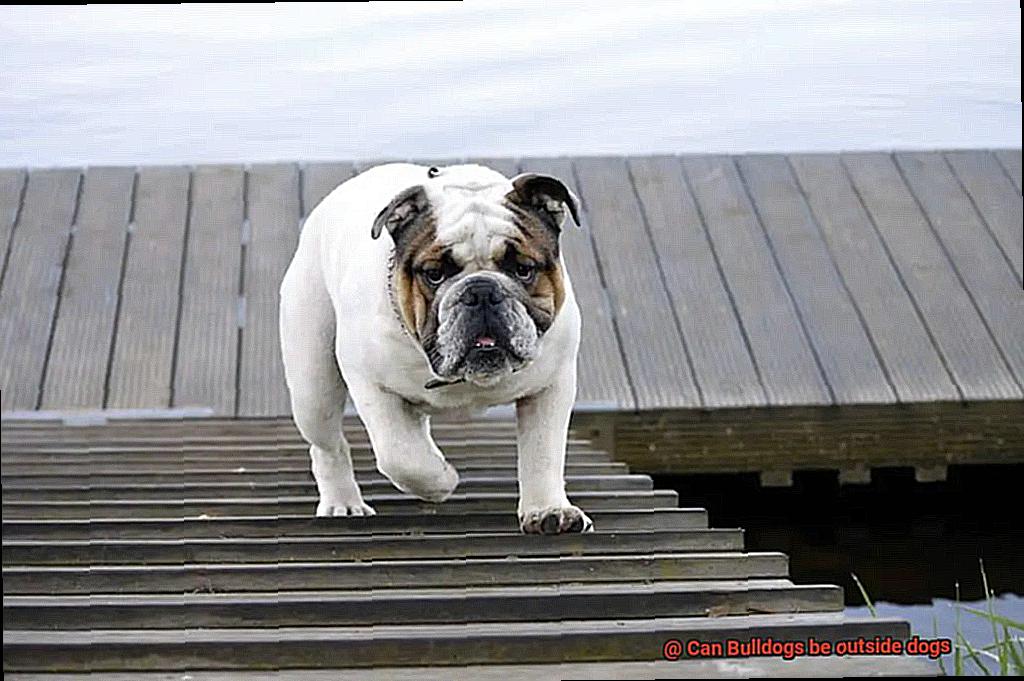
During extreme weather conditions, it’s important to check on your Bulldog regularly. Look out for signs of overheating such as excessive panting, difficulty breathing, drooling, weakness, and collapse. If any of these symptoms occur, seek immediate veterinary attention.
Pros and Cons of Taking Your Bulldog Outside
Today, we’re going to dive into the great debate: should you take your wrinkly buddy outside? Don’t worry, I’ve got you covered with all the pros and cons you need to make an informed decision. Let’s jump right in.
Pros:
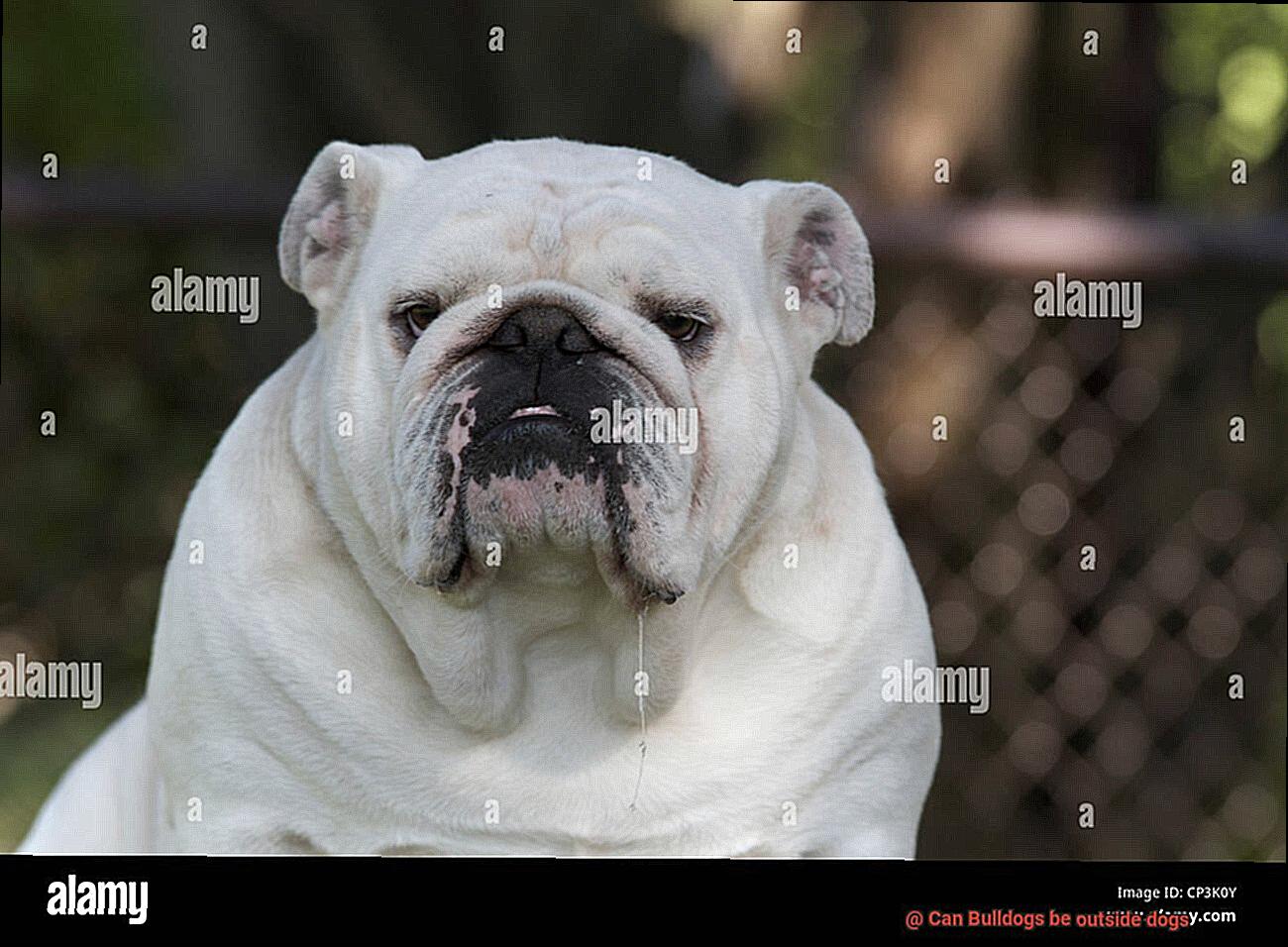
- Physical exercise: Bulldogs love a good stroll or game of fetch. Taking them outside allows them to stretch their chubby little legs and burn off some energy. It’s important for them to maintain a healthy weight and prevent obesity, which can lead to a host of health issues.
- Mental stimulation: Variety is the spice of life, even for bulldogs. The great outdoors provide a smorgasbord of sights, smells, and sounds that can keep your pup mentally engaged. This helps combat boredom and those pesky destructive behaviors that might otherwise rear their ugly heads.
- Socialization opportunities: Our furry friends are social creatures, and taking them outside exposes them to new people, animals, and situations. This helps them become well-rounded individuals (err, dogs) who handle different scenarios with ease. Plus, it reduces the chances of them turning into a grumpy old bulldog when faced with unfamiliar faces.
- Vitamin D absorption: Just like us humans, bulldogs need their daily dose of vitamin D too. Allowing them to spend time in the sunshine ensures they produce this important nutrient, which keeps their bones strong and immune system in tip-top shape.
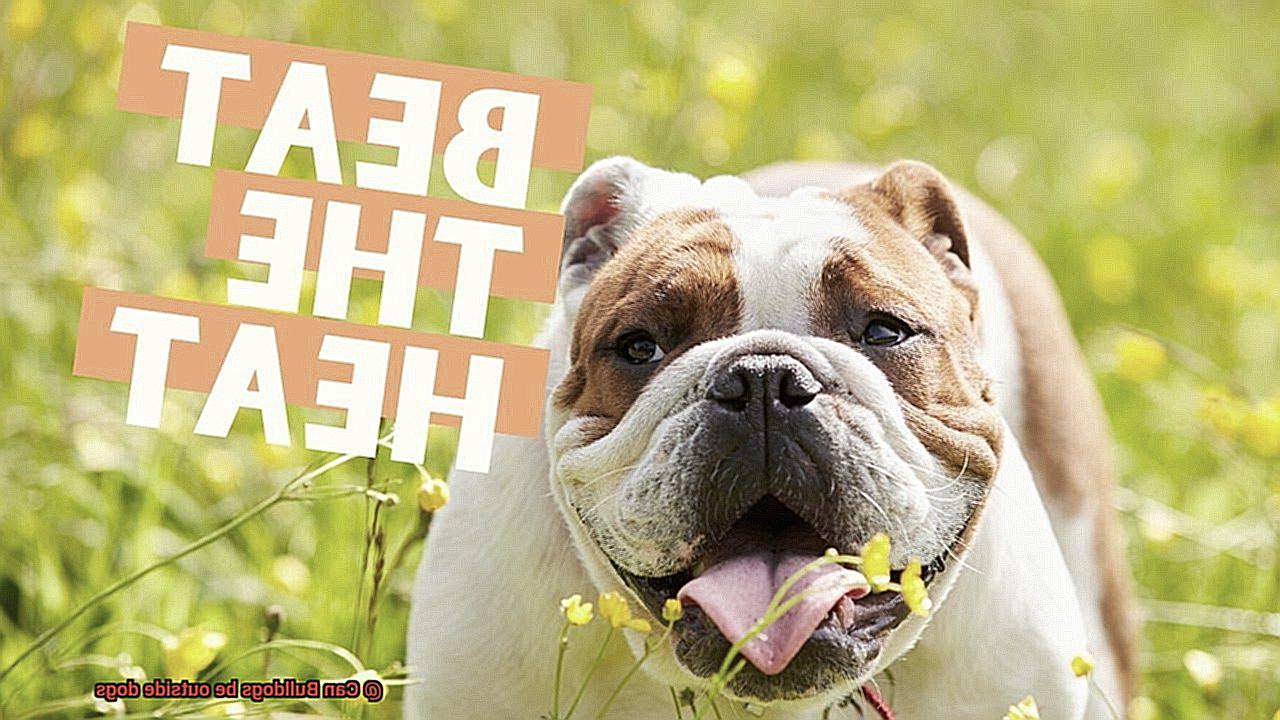
Cons:
- Heat sensitivity: Bulldogs may be tough on the outside, but they’re sensitive souls when it comes to heat. Their squished faces make it harder for them to regulate their body temperature, making heat exhaustion and heatstroke real dangers. So when the mercury rises, limit outdoor time and provide plenty of shade and water.
- Cold intolerance: On the flip side, bulldogs aren’t built for winter wonderlands either. Their thin coats and lack of insulation mean they get chilly faster than you can say “fetch.” Keep outdoor time limited during frigid weather and consider bundling them up in stylish jackets or booties to protect against frostbite.
- Respiratory issues: Ah, those precious flat faces. While they make bulldogs super cute, they also come with some breathing challenges. Excessive exercise or exposure to environmental irritants can worsen their respiratory issues. Keep an eye on their breathing during outdoor activities and adjust accordingly.
- Injury risks: Bulldogs may not be the most agile athletes out there (no offense, Fido.). Their stocky build and short legs make them prone to accidents and injuries during high-impact play or roughhousing. Keep a close eye on them and avoid situations that could lead to falls, collisions, or muscle strains.
Tips for Keeping Your Bulldog Safe in the Outdoors
French Bulldogs are adorable and lovable companions, but they require special care when it comes to spending time outdoors. Their unique physical characteristics make them more susceptible to certain health issues, such as overheating and respiratory problems. In this article, we will provide you with essential tips to keep your French Bulldog safe and comfortable in the great outdoors.
Be Mindful of Temperature:
French Bulldogs are sensitive to extreme temperatures, especially heat. Avoid taking them outside during the hottest parts of the day, and opt for early morning or evening walks when it’s cooler. Heatstroke is a serious concern for Bulldogs, so always ensure they have access to shade and fresh water.
Protect Their Paws:
The pavement can get scorching hot during summer months and cause painful burns on your Bulldog’s paws. Before going for walks, check the pavement temperature by placing your hand on it for a few seconds. If it’s too hot for you, it’s too hot for your dog. Consider using protective booties or walking on grassy areas instead.
Shield from the Sun:
Bulldogs are prone to sunburns, especially on their nose, ears, and belly. Apply pet-safe sunscreen to these areas before going outside. For added protection, consider using lightweight protective clothing like a doggy t-shirt or rash guard.
Watch Out for Hazards:
Bulldogs have a curious nature and may be tempted to eat or chew on things that can be harmful. Keep an eye out for toxic plants or substances in your yard, as well as potential hazards like sharp objects or small toys that can pose a choking hazard.
Leash Up:
Always keep your French Bulldog on a leash when outside, as they can easily get distracted and wander off. Bulldogs may also have a strong prey drive, so a leash will prevent them from chasing after small animals and potentially getting into accidents.
What to Do if Your Bulldog Overheats or Gets Too Cold Outside
French Bulldogs are beloved pets known for their adorable appearance and charming personalities. However, their unique physical characteristics make them more susceptible to extreme temperatures. In this guide, we’ll explore how to care for your Bulldog in hot and cold weather, ensuring their safety and well-being.
Hot Weather Precautions:
During hot weather, Bulldogs can easily overheat due to their short snouts and narrowed airways. It’s essential to take precautions to prevent heatstroke.
First, be aware of the signs of overheating, such as excessive panting, drooling, and difficulty breathing. If you notice these signs, act quickly to cool your Bulldog down.
Move your Bulldog to a shaded area or indoors where it’s cooler. Use a fan or air conditioning to lower their body temperature. Offer fresh water to drink, avoiding ice-cold water. Wet their body with a damp towel or sponge, focusing on their head, neck, belly, and paws. You can also place cool packs wrapped in a towel on their belly or groin area.
Never leave your Bulldog alone in a car, as temperatures inside can rise rapidly and lead to heatstroke. If your Bulldog’s condition doesn’t improve or worsens, seek immediate veterinary attention.
Cold Weather Preparations:
Bulldogs are also sensitive to cold weather due to their short coat and low tolerance for extreme temperatures. Take steps to keep them warm and comfortable.
Limit their time outdoors in cold weather and provide them with a warm, insulated shelter that is elevated off the ground. The shelter should be dry and draft-free. Consider using dog sweaters or jackets for extra warmth when they go outside.
Protect their paws from cold surfaces by using dog boots or applying a protective balm. Salt and ice can cause irritation and frostbite. Pay attention to signs of discomfort such as shivering, lethargy, or seeking warmth. If your Bulldog shows signs of being too cold, bring them indoors and provide extra warmth.
Monitoring and Prevention:
To ensure your Bulldog’s safety, monitor their behavior and adjust their time outdoors accordingly. Remember that Bulldogs are not well-suited for extreme temperatures and need your care and attention to stay comfortable.
Regular exercise should be done during cooler times of the day to prevent overheating. Always carry water with you and offer it to your Bulldog frequently to keep them hydrated.
Consulting with a veterinarian who is familiar with brachycephalic breeds can provide you with more specific advice on how to keep your Bulldog safe in different weather conditions.
ZPC9F_w4NXI” >
Conclusion
In conclusion, Bulldogs are not well-suited to being outside dogs.
Their short snouts make it difficult for them to regulate their body temperature in extreme weather conditions. Additionally, their sensitive skin is prone to sunburn and other skin issues when exposed to prolonged sunlight.
Furthermore, Bulldogs are social animals that thrive on human companionship, so leaving them alone outside for long periods can lead to loneliness and behavioral problems.
